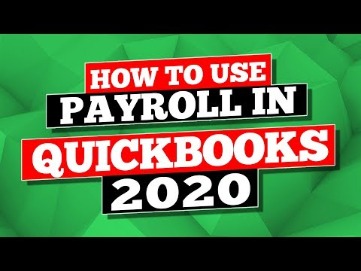
The cost of goods sold Manufacturing account tracks information on all inventory items sold by the firm. This includes any items used in the production process but is types of tax accounting methods not yet part of the finished product. Since then, many other industries have come to regard removing waste from their processes as beneficial to the bottom line.
Is there any other context you can provide?
Because you must get special permission from the IRS to change your accounting basis later, it’s best to get it right the first time. These articles and related content is the property of The Sage Group plc or its contractors or its licensors (“Sage”). Please do not copy, reproduce, modify, distribute or disburse without express consent from Sage. With the right accounting systems in place for your manufacturing business, you’ll be able to optimize your processes. This will help you identify your most profitable product lines and customers and improve your budgeting – which will help your business to grow. As a manufacturing business gets more complex, the above options may still work well for accounting, but other solutions may provide more features to help you manage your business finances and processes.

Manufacturing accounting: a unique approach for a unique sector
The system underlines LOD 3 on balance sheet reports and LODs 3 and 4 on income statement reports. This information helps companies arrive at better decisions about when to buy materials and sell products. Moreover, it is dubbed a complete business because it buys the raw materials used to create a product before selling it.

Process costing
This account tracks all of the raw materials or physical items necessary to create a product. All such information is provided solely for convenience purposes only and all users thereof should be guided accordingly. The finished goods Manufacturing account represents all finished products ready for sale. Apply for financing, track your business cashflow, and more with a single lendio account. Inventory is continually being sold and restocked, so you may need to make a cost flow assumption. It is a practice first initiated by Toyota but has influenced manufacturing for decades, particularly the automobile industry.
Implement automated inventory management
A manufacturing company has no need to prepare a manufacturing account, statement of production, or a cost sheet, before preparing the income statement. The income statement remains the same except for the transfer of goods manufactured to a trading account to be treated as finished goods (at par with purchases). The best manufacturing accounting software uses automation to ensure accurately recorded costs throughout the year, reduce admin time, and minimise the risk of human error. Production costing methods are manufacturing accounting methods used to calculate and analyse your costs to produce finished goods. From a manufacturing accounting perspective, indirect materials are often considered overheads rather than materials.
See Rootstock Manufacturing Accounting Software in Action
This accuracy in determining the cost of producing a product is vital for strategic decision-making and maintaining healthy inventory management practices, aligning with generally accepted accounting principles. Advanced manufacturing accounting software is a must-have for modern manufacturers and the manufacturing accounting the systemic implications of bail teams responsible for tracking business financials. Manufacturers demand powerful, intuitive financial reporting with customizable dashboards to monitor costs, profitability, cash flow, and financial health in real-time. Rootstock Financials is an ideal solution for manufacturing accounting, and so much more.
In addition, there are also indirect costs that must be managed within a manufacturing business, such as insurance premiums and daily office expenses. Manufacturers may also benefit from various tax incentives and credits designed to promote investment in research and development (R&D), capital expenditures, and job creation. For instance, the R&D tax credit provides a dollar-for-dollar reduction in tax liability for qualifying research activities, encouraging innovation and technological advancement. Additionally, manufacturers can take advantage of accelerated depreciation methods, such as bonus depreciation and Section 179 expensing, to write off the cost of capital assets more quickly. These incentives can provide significant tax savings, enhancing cash flow and supporting reinvestment in the business. Conversely, the Last-In, First-Out (LIFO) method assumes that the most recently acquired inventory items are sold first.
Bench helps small businesses automate their bookkeeping and accounting processes, which is great for startups and new manufacturing businesses. They provide you with a team of dedicated financial professionals to help you with all aspects of your bookkeeping and accounting, so you can focus on manufacturing. Variable costs are expenses that a company bears proportional to its production volume. A good example would be the costs of packaging for finished goods but also utilities like heating and water, as well as some labor expenses, etc. Fixed costs, on the other hand, include concrete expenses that generally cannot be adjusted easily. Material costs cover all the inventory stock items that go into a finished product.
The amount of depreciation is deducted from the gross profit to arrive at the net profit before tax. There are likely hundreds of software tools available that help with accounting for manufacturing costs. You’ll need to speak with your accountant or financial advisor and consider your current budget before making an informed decision. Manufacturing accounting software helps you track your financials in real time using cloud-based technology and multi-platform integrations. Manufacturing overhead costs are indirect costs that are incurred during a particular accounting period but cannot easily be accounted for on a per-unit basis.
Variance analysis complements standard costing by identifying and analyzing the differences between standard costs and actual costs. These variances can be categorized into material, labor, and overhead variances, each offering insights into different aspects of production efficiency. For instance, a material price variance might indicate fluctuations in raw material costs, while a labor efficiency variance could highlight issues in workforce productivity. By dissecting these variances, manufacturers can pinpoint the root causes of cost deviations and implement corrective actions to mitigate them.
- Manufacturing accounting software helps you track your financials in real time using cloud-based technology and multi-platform integrations.
- If you want to refine your production process and automate aspects of your business, accurate costing information helps you identify wasteful costs passed on to the customer or absorbed within the company.
- These metrics provide quantifiable measures of various aspects of financial health, from profitability to efficiency and liquidity.
Spreadsheets may work for smaller businesses, but the more complex your operations become, the better it will be to have a tool that can automate most of the accounting processes. Many manufacturers may also find that management software can augment their accounting solution to help them with project management from design to distribution. Enterprise resource planning (ERP) software can automate many aspects of your business, including finance, human resources, customer relationship management (CRM), marketing, and more. However, an ERP system can also be pricey, especially for small manufacturers or startups.
As part of the manufacturing process, your business is likely to have items in production that have not yet been completed. In this guide we’ll walk you through the financial statements every small business owner should understand and explain the accounting formulas you should know. Direct labor is the value given to the labor that produces your goods, such as machine or assembly line operators.
This information can help companies budget for future production runs and make informed financial decisions. Cloud-based software will let you do this and will also produce a paper trail if required. With this knowledge you’ll be able to choose the right accounting system to help your manufacturing business grow. Retailers sell stock and service companies sell their time, but only manufacturers create new products from scratch.
Materials consist of items in inventory that have not yet been entered into production or used. Work-in-process includes manufactured products that have been started but are not yet completed. Finally, finished goods are manufactured products that have been completed but not yet sold to customers.
For example, this could include a custom-built machine or a small batch of products. Look at where the inefficiencies are in the production process and where the waste is coming from, adjusting the pricing if required. Standard costing is useful if you are making similar products or accounting for uncollectible accounts receivable large quantities of a specific product. Very often, this is listed in a bill of materials, which itemizes quantities and costs the materials used in your product. In process manufacturing, such as food and beverage or chemicals, the bill of materials is known as a production recipe.
